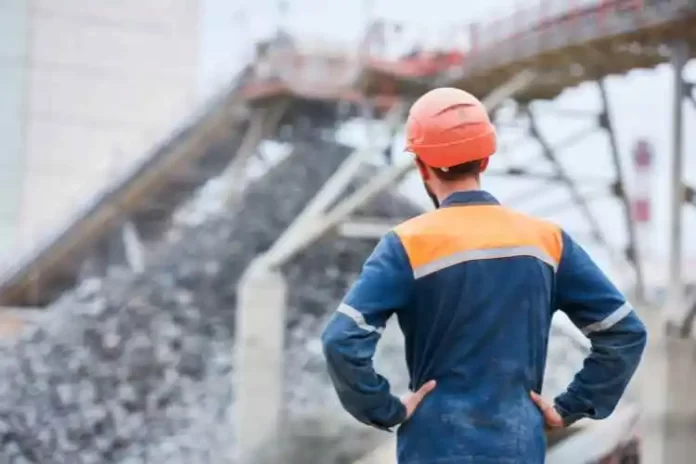You step into your workplace every day, dedicated to your job and the tasks at hand. Whether you’re in construction, manufacturing, aviation, or any of the myriad industries that keep our world running, your commitment is unwavering.
Amidst the hustle and bustle, fire incident is a silent threat that might not always be visible but can have profound consequences. There are different methods to douse fires but industries often employ Aqueous Film-Forming Foam (AFFF).
However, recent studies have revealed the adverse health effects associated with AFFF. Thus, there is a need to protect yourself, irrespective of your industry. This blog sheds light on the health hazards of AFFF and how it poses unique challenges for workers in four distinct sectors.
Construction Industry
In the construction industry, where every weld and beam signifies progress, there’s an underlying threat that demands your attention. Between 2017 and 2021, fire departments in local areas dealt with about 4,440 fires each year at under-construction sites. These fires caused an average of five civilian fatalities, 59 civilian injuries, and $370 million in direct damage to properties each year.
Taken from the National Fire Protection Association, the figures paint a stark reality of this industry. As you navigate the scaffolding and hardhats, you need to recognize the specific vulnerabilities construction workers face concerning AFFF.
When a construction site is in flames, it jeopardizes not only the project’s progress but also the lives of those working on it. Then, there is an urgent need to address AFFF-related health hazards in the construction sector.
AFFF, a common firefighting foam used to combat blazes, is a silent accomplice in this perilous environment. Construction workers find themselves exposed to potential harm from both fire incidents and the chemicals used to suppress them.
Manufacturing Industry
In this sector where machines hum with productivity, a hidden danger exists. As you navigate the factory floor, the risks extend beyond the immediate dangers of the machinery. Manufacturing workers are unknowingly exposed to potential health hazards associated with AFFF. This firefighting foam, while effective in extinguishing fires, introduces workers to a set of challenges.
According to TorHoerman Law, the crux of the issue lies in PFAS, referred to as “forever chemicals”. These substances persist indefinitely in the environment and human blood, resisting degradation. Their association with various types of cancer raises significant alarms. The trend, thus, underscores the urgency of addressing AFFF-related health vulnerabilities in the manufacturing sector.
Experiencing chronic health conditions following AFFF and PFAS exposure is a physically, emotionally, and financially draining reality for victims. In response, many are taking a firm legal stance, supported by lawyers, to hold the manufacturers accountable. By filing an AFFF foam lawsuit, they aim to seek justice and compensation for the health risks they now endure.
Chemical Industry
In the domain of the chemical industry, where compounds and reactions define daily operations, fire accidents have become a dark reality.
Between January 1, 2021, and October 15, 2023, there were 829 hazardous chemical incidents, averaging nearly one every 1.2 days, according to a report by Coming Clean. These incidents caused 43 deaths and over 150 instances of injuries, hospitalizations, or acute symptoms following chemical exposure.
In the chemical sector, the repercussions of fire incidents are twofold. Not only do workers contend with the immediate dangers of the fire, but they also face the lingering threat of AFFF exposure. AFFF contains PFAS, known for their persistence and links to severe health conditions, including cancer. This dual hazard emphasizes the imperative of comprehensive measures to safeguard workers from the risks associated with AFFF.
Petrochemical Industry
The complex petrochemical processes can make workers prone to various accidents, including fires. For instance, the Marathon Petroleum refinery in Garyville faced a notable chemical fire prompting evacuations in August 2023.
State records unveil a concerning pattern, with over a dozen emergency incidents reported in the past five years. The Louisiana Department of Environmental Quality (LDEQ) discloses that the Marathon refinery in St. John the Baptist Parish documented a total of 14 emergencies since 2019.
As workers navigate the complexities of petrochemical processes, the specter of AFFF adds another layer of risk. Imagine a scenario where routine operations intersect with potential hazards, exemplified by the emergency incidents recorded at the Marathon refinery. The data underscores the imperative for a focused approach in addressing AFFF-related health vulnerabilities specific to the petrochemical industry.
Within the petrochemical landscape, precision and safety should be paramount. Increasing fire incidents underscore that AFFF and its health risks are tangible threats, demanding attention and proactive measures.
Final Thoughts
Fire incidents are common and fatal threats, endangering lives across industries. As each industry faces unique challenges, the need to manage them should be tailored accordingly. However, one truth becomes evident: awareness is the first step toward change.
AFFF, while effective in dousing fires, can pose serious health risks to those exposed to its harmful effects. Thus, through collective awareness and action, we pave the way for a workplace where every worker can thrive without compromising their health.


